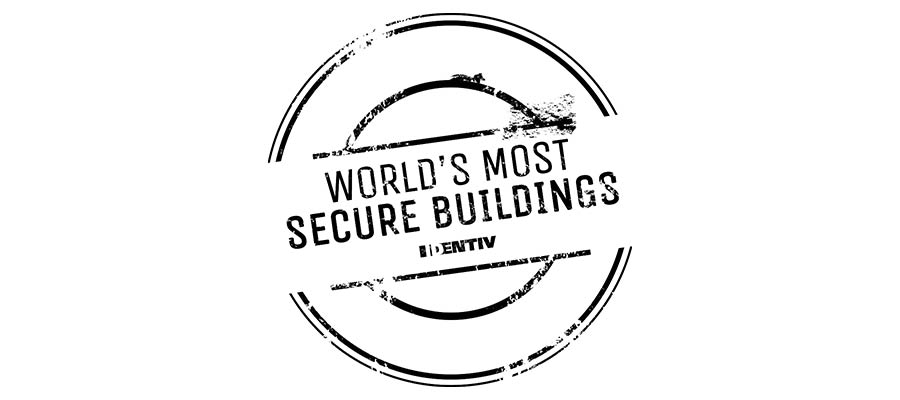The World’s Most Secure Buildings: CIA Headquarters in Langley, Virginia
February 9, 2022
The Central Intelligence Agency (CIA) is a civilian foreign intelligence service of the federal government of the United States, officially tasked with collecting, processing, and analyzing national security information from across the globe, chiefly through the use of human intelligence (HUMINT).
As a principal member of the U.S. Intelligence Community (IC), the CIA reports to the Director of National Intelligence and is chiefly focused on providing intelligence for the President and Cabinet of the U.S.
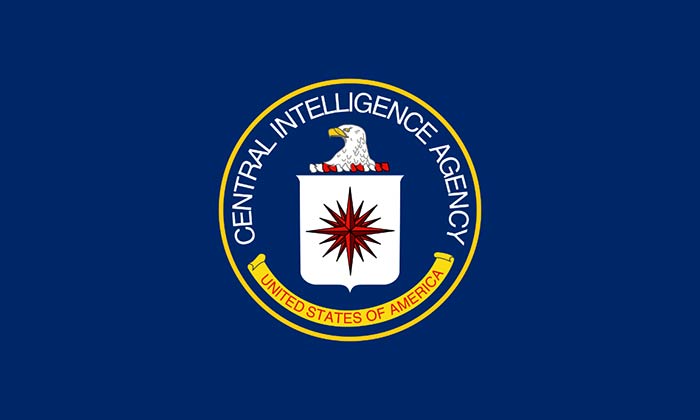
According to a report by the Associated Press, the CIA Headquarters in Langley, Virginia reportedly reads up to 5 million tweets per day. The CIA’s Open Source Center appraises and evaluates information extensively available to the general public, including Twitter and Facebook, and keeps eyes on everything from blogs to tweets to more traditional media.
The CIA agents seemingly like to stay up-to-date on the public’s reactions to world events. Other surveillance methods include TVs, iPhones, Androids, and computers running Windows, macOS, and Linux.
What makes the CIA Headquarters in Langley, Virginia one of the world’s most secure buildings? Read on to find out.
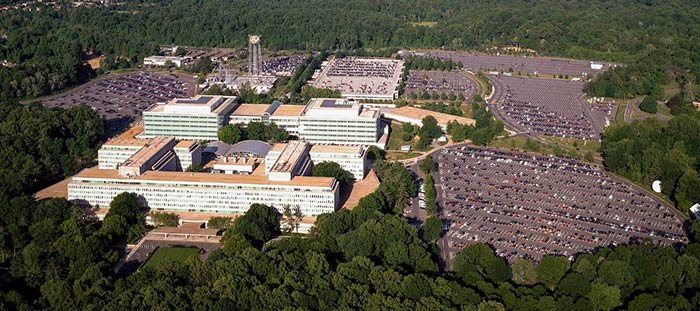
What You Will Find at the CIA Headquarters
Along with its robust security, the CIA Headquarters in Langley Virginia is known for its campus, galleries, memorials, secret statues, and more.
1. “Kryptos” Sculpture
James Sanborn’s sculpture “Kryptos” begins at the entrance to the New Headquarters Building and continues in the northwest corner of the New Headquarters Building courtyard.
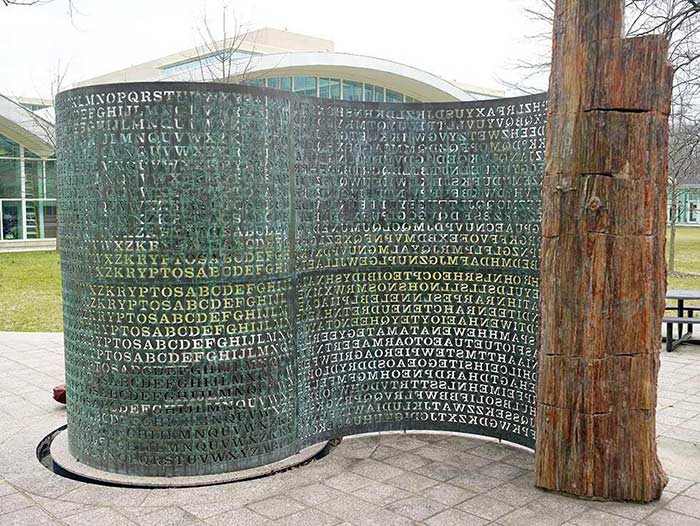
The theme of this sculpture is “intelligence gathering”. “Kryptos”, dedicated on November 3, 1990, includes materials native to the U.S. A piece of petrified wood supports a large S-shaped copper screen resembling a piece of paper coming out of a computer printer.
The screen is inscribed with several mysterious messages, each written in a different code. “Kryptos” continues to be a source of pleasure and mystery for CIA employees, with a few taking the challenge to break the code.
2. A-12 Oxcart
The CIA developed the highly secret A-12 OXCART as the U-2’s successor, intended to meet the nation’s need for a very fast, high-flying reconnaissance aircraft to avoid Soviet air defenses.
Lockheed (manufacturer of the U-2) won the OXCART contract in 1959. In meeting the A-12’s extreme speed and altitude requirements, Lockheed overcame several technical challenges with front-line innovations in titanium fabrication, lubricants, jet engines, fuel, navigation, flight control, electronic countermeasures, radar stealthiness, and pilot life-support systems.
In 1965, after hundreds of hours flown at high personal risk by the elite team of CIA and Lockheed pilots, the A-12 was declared fully operational, attaining the design specifications of a sustained speed of Mach 3.2 at 90,000 feet altitude.
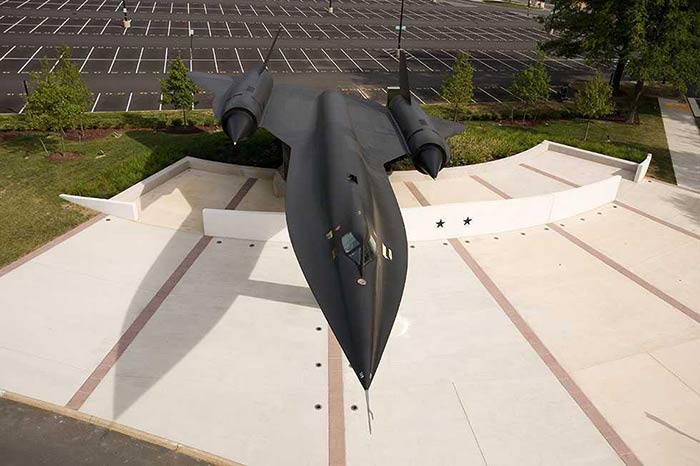
3. Atrium Sculpture Hall
The Atrium Sculpture Hall hosts a collection of statues donated to the CIA. The statues in the collection include, “The Day the Wall Came Down”, “Windwalker”, and “Intrepid”.
The Day the Wall Came Down
“The Day the Wall Came Down” by sculptor Veryl Goodnight captures the joy of freedom as the Berlin Wall fell on November 9, 1989. It joined the collection on October 5, 2000. The wall in the sculpture represents obstacles to personal freedom in the past and present. The stallion, representing man, is placed on the east side of the wall urging the mares, representative of families, to a better life of freedom in the West.
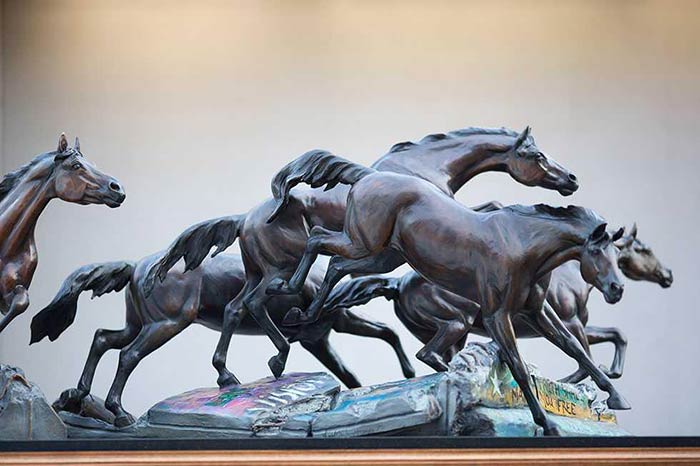
Windwalker
The U.S. national symbol, the eagle, represents vigilance, alertness, strength, courage, and freedom. Located in the lobby, the dramatic 48-inch bronze “Windwalker” by sculptor Kitty Cantrell exemplifies the same qualities. It was added to the collection on April 1, 2002.

Intrepid
Gifted by the Intrepid Society of Winnipeg, Manitoba, Canada, this 22-inch statue of Sir William Stephenson, code-named “Intrepid”, was dedicated on May 2, 2000. Sculpted by world-renowned artist Dr. Leo Mol, the statue depicts the WWII hero in his aviator’s uniform.
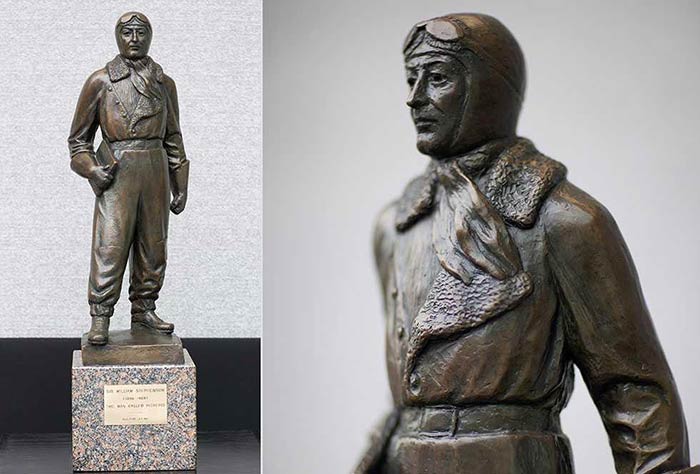
4. CIA Library
The library is a valuable resource to CIA employees and is exclusively available to agency personnel. It contains approximately 125,000 books and subscribes to about 1,700 periodicals. The library maintains three collections: Reference, Circulating, and Historical Intelligence.
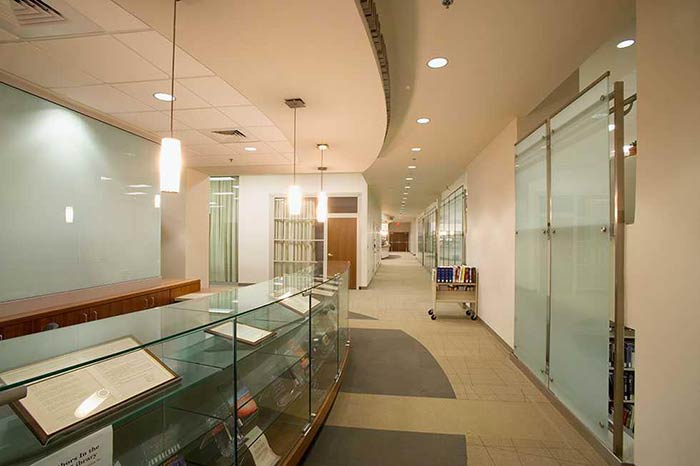
- Reference: core research tools such as encyclopedias, dictionaries, commercial directories, atlases, diplomatic lists, and foreign and domestic phone books
- Circulating: monographs, newspapers, and journals; the library also participates in interlibrary loans of circulating items with other government and public libraries
- Historical Intelligence: primarily an open-source library dedicated to the collection, retention, and exploitation of material dealing with the intelligence profession, featuring 25,000+ books and extensive press clippings
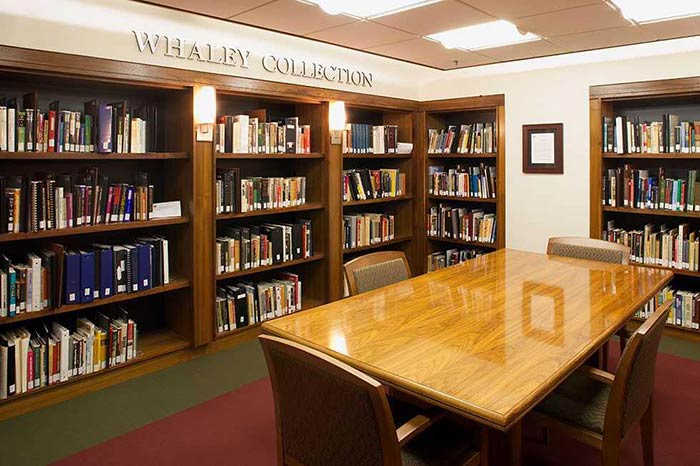
5. CIA Memorial Wall
The Memorial Wall is located north of the Original CIA Headquarters Building lobby. This wall of 137 stars stands as a silent, simple memorial to those CIA officers who have made the ultimate sacrifice. Among the stars, a simple inscription reads:
In honor of those members of the CIA who gave their lives in the service of their country.

6. CIA Seal
The CIA seal is a hallmark of the Original CIA Headquarters Building lobby. The large granite seal, measuring 16 feet in diameter, has been the symbol of the CIA since February 17, 1950. This emblem consists of the eagle, the shield, and the 16-point compass star.
- The eagle is the national bird of the U.S. and stands for strength and alertness
- The 16-point compass star represents the convergence of intelligence data from around the world at a central point
- The shield is the standard symbol of defense
This seal is one of the most identifiable symbols of the CIA and features throughout popular culture in entertainment and documentary motion pictures.
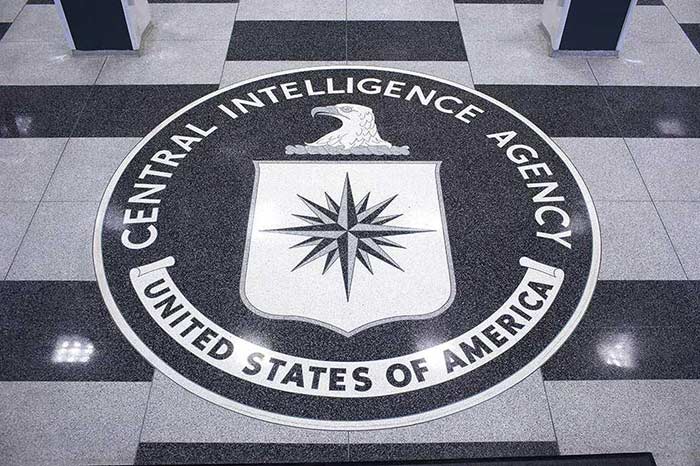
7. CIA Museum
Located at the CIA headquarters in Langley, Virginia, the 11,000 square-foot museum houses fascinating projects like dragonfly drones, robotic fish, and pigeon-mounted cameras. However, only agency members and cleared guests are allowed inside.
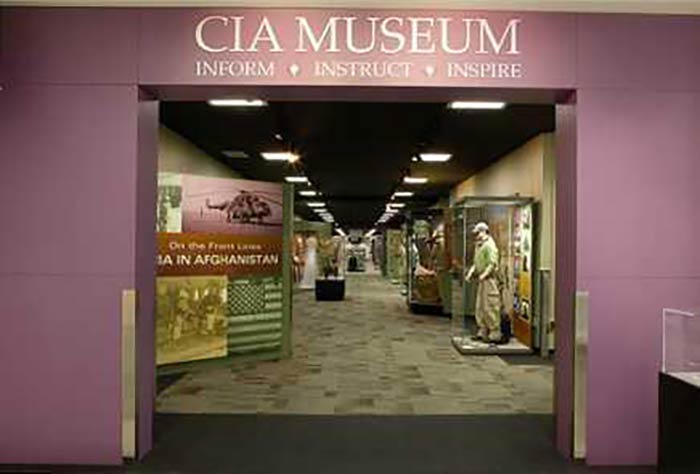
The CIA Museum was established in 1988 to give employees a sense of the unique history of their profession. This collection focuses on the CIA’s World War II predecessor, the Office of Strategic Services, and the current CIA.
Popular galleries include:
- Office of Strategic Service (OSS) Gallery:
The OSS Gallery features the personal effects reflecting the career of Maj. Gen. William J. Donovan, the head of OSS, as well as numerous examples of OSS tradecraft (much of which was used by CIA after it was established by President Truman in 1947) and items from the Persian Gulf War and the end of the Cold War.
- Cold War Gallery:
The Cold War Gallery is located near the Original CIA Headquarters Building main lobby. “The Cold War: Fifty Years of Silent Conflict” showcases some of Melton’s 6,000 clandestine espionage artifacts from the U.S., the former Soviet Union, and East Germany. These artifacts are currently on loan by Melton.
- Directorate of Intelligence Gallery: For over 50 years, the Directorate of Intelligence (DI) has informed U.S. presidents and other policymakers about the world in which they live. Some of the exclusive items displayed include Francis Gary Powers’ U-2 model and an al-Qa’ida training manual.
- Directorate of Science and Technology Gallery:
The Directorate of Science and Technology Gallery displays items designed by some of America’s most advanced thinkers, adapting existing technologies or inventing new ones, and generously putting themselves in the service of freedom.

- Afghan Gallery: This gallery presents artifacts and images relating to the global fight against international terrorism. The uniquely visual exhibit addresses the importance of joint operations, cross-community relationships, and sacrifice, while providing a current mission focus in support of operational, training, and recruiting outreach.
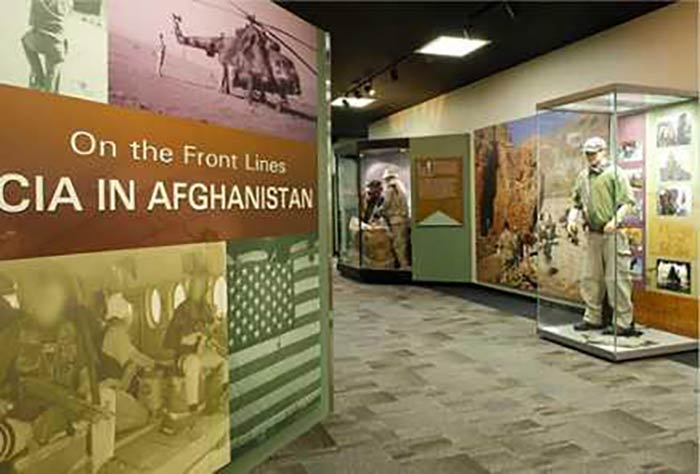
What Makes the CIA Headquarters One of the World’s Most Secure Buildings?
While much of the CIA’s security practices remain top secret, it is said a CIA employee typically undergoes employee polygraph testing every three to four years to keep America’s intelligence headquarters safe and secure from treachery.
Construction of the CIA campus was completed in 1963. The original building spans 1,400,000 square feet and sits on a private, secure lot of land. Architects involved in the project needed top security clearance and building plans were actively protected to ensure all security features were kept secret. The facility houses a museum, though no one outside of the agency has ever been allowed to enter.
Even the Starbucks at the CIA headquarters is not allowed to use names for orders. Instead, the baristas have to pair each order with the face of its secretive customers. All nine employees are required to undergo extensive background checks and no one can enter the store without special security clearance.
Secure Your Building with Identiv
Identiv’s flexible
physical access control system (PACS) and
video intelligence solutions provide the highest security at the lowest cost possible. Regardless of physical location, you can easily manage access control through our robust, feature-rich systems, hardware, and software. Our technology integrations deliver high-security physical access control solutions in partnership with other industry-leading providers.
To learn more about our PACS solutions, contact us at +1 888.809.8888 or
sales@hirschsecure.com.
